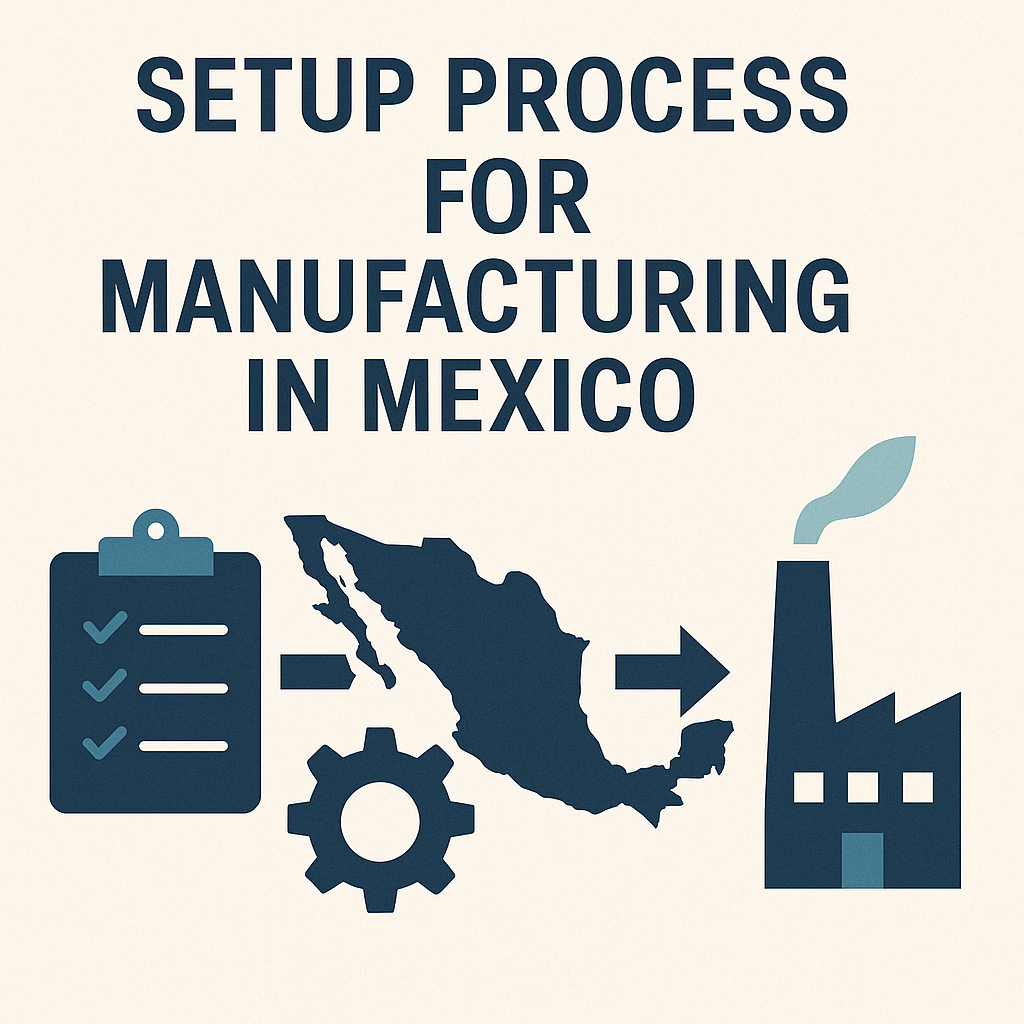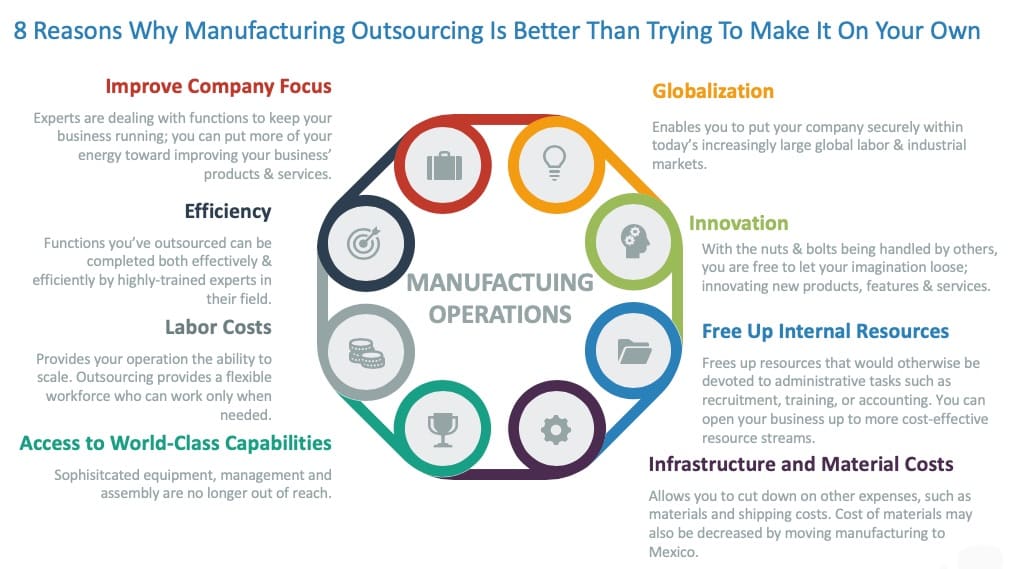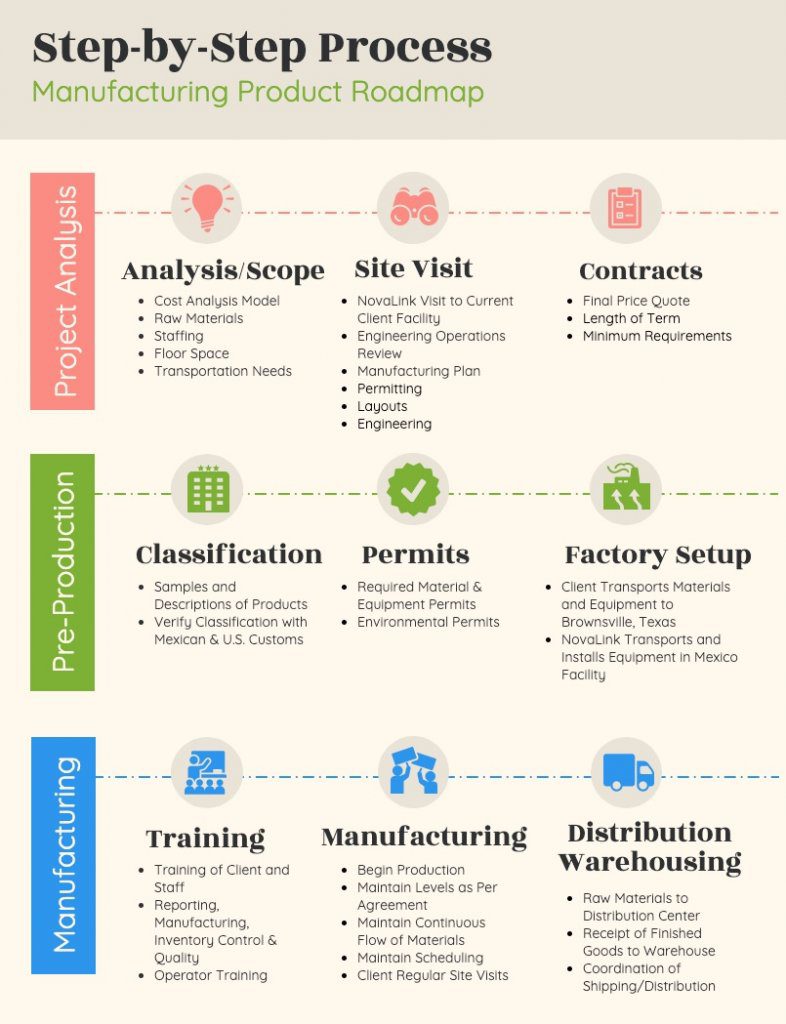Last Updated on June 19, 2025

Setting up a manufacturing operation in Mexico sounds like a good idea—and honestly, it is. The cost savings, access to skilled labor, and proximity to the U.S. make it an attractive move. But the setup process for manufacturing in Mexico? That’s a different story. It’s not rocket science, but it’s definitely not plug-and-play either. From permits to shifting timelines to things nobody warns you about until it's too late—it pays to walk in with your eyes open.
Let’s break it down in real terms, with the kind of detail you’d want if your job (or millions in capex) were riding on it.
So, How Long Does It Really Take?
Let’s get the number out of the way first: if you try to do it all yourself AND if everything runs smoothly, expect 4 to 6 months before you’re fully operational. But—big but—that assumes you already have a solid partner on the ground, your paperwork isn’t stalled, and your site doesn’t run into infrastructure surprises.

Here’s a rough idea of how your timeline might break out:
- Weeks 1–4: Site selection, due diligence, feasibility studies
- Weeks 5–8: Company formation, legal filings, basic infrastructure evaluations
- Weeks 9–12: Permits (federal, state, municipal), utility setup
- Weeks 13–18: Buildout, equipment move-in, staffing, test runs
- Weeks 19–24: Final compliance checks, certifications, soft launch
But let’s be real—few companies hit that schedule without delays. The issue isn’t laziness or inefficiency—it’s the layers. Mexico has federal, state, and local processes that don’t always move in sync. You might have your federal import/export permit squared away but be held up because the local zoning board hasn’t cleared your access road.
Also: start early on utilities. Power, water, gas, internet—each has its own process, and some regions are more efficient than others. Delay here can wreck your launch timeline.
Permits You Can't Ignore (No, Seriously—Don’t Skip These)
Paperwork isn’t just a formality in Mexico—it’s the guardrail that keeps your entire operation legit. Skip one document and suddenly your containers are stuck in customs, your HR team can’t hire legally, or your tax bill skyrockets.
Here’s what you’ll need—at a minimum:
- IMMEX Program Certification: This is the golden ticket for duty-free importing of raw materials. No IMMEX, no real cost advantage.
- Federal Tax ID (RFC): Think of it like your business's social security number.
- Land Use and Zoning Permits: Issued at the municipal level. Without these, construction can’t begin.
- Environmental Impact Statement: Required if your operations involve emissions, water discharge, or certain chemicals.
- Operational License (Licencia de Funcionamiento): Essentially your business license—granted once the site meets all operating standards.
- Work Visas (if you’re sending expats): Even short stays require the proper visas or you’ll run into immigration headaches.
It helps to have a local legal rep or setup partner who knows which agency prefers digital filings and which still runs on paper and patience.
Where Most Companies Trip Up (And It’s Not Where You Think)
You’d assume the biggest hurdles are legal. Actually, the curveballs are usually:
1. Misjudging Labor Timing
Yes, Mexico has a solid manufacturing workforce. No, you can’t fill 150 skilled roles overnight—especially in a smaller town. Factor in recruitment timelines, training, and turnover risk before you start quoting delivery schedules.
2. Import/Export Delays
This one hits hard. Your product’s ready, your buyer’s waiting… and then customs holds your shipment for a random inspection. A reliable customs broker isn't optional—it’s survival.
3. Infrastructure Gaps
Some industrial parks look great on paper. Then you find out they don’t have a fiber line or power backup. Always—always—walk the site before signing anything.
4. Thinking U.S. Logic Applies
Here’s the thing: Mexico works differently. The pace, the paperwork, the negotiation style—it’s not slow, it’s local. If you try to run things the same way you do in Ohio or L.A., you’ll burn relationships and time.
Can You Make It Easier on Yourself?
Absolutely. That’s where working with a nearshore manufacturing partner like NovaLink really changes the setup process for manufacturing in Mexico game. Instead of wrangling permits, setting up legal entities, or navigating customs alone, NovaLink handles the heavy lifting—from infrastructure to HR to compliance. They’ve already built the operational framework, so you can plug into an established system without months of trial and error. It’s like skipping the construction and walking straight into a turnkey facility that’s ready to go. Less downtime. Fewer surprises. And a local team that already knows how to keep things moving—without disruption.

One More Thing: Respect Goes a Long Way
This may sound fluffy, but it’s real: respect the culture. Invest in local management, pay fair wages, support community events, and avoid the “we know better” attitude. You’ll build trust faster—and in Mexico, trust often opens doors faster than money can.
Conclusion
The setup process for manufacturing in Mexico can feel overwhelming—until you realize it’s not about hacking the system. It’s about respecting how the system works, planning for what it doesn’t tell you up front, and building relationships that help you move faster when it matters most.
Done right, your Mexico facility won’t just be a cost-saver—it’ll be a strategic advantage. But only if you start smart, move intentionally, and stay flexible when things don’t go perfectly (because they won’t).
FAQs
What is the average setup time for manufacturing in Mexico?
Most companies take between 4 to 6 months, but this depends on location, permits, infrastructure readiness, and workforce availability.
Do I need to have a legal entity in Mexico to operate?
Yes—unless you're working under a shelter company, which acts as the legal entity on your behalf.
What’s the biggest risk in setting up operations in Mexico?
Unexpected delays due to permitting, customs, or infrastructure—often because of miscommunication or lack of local support.
Can I hire workers immediately?
Not quite. You’ll need labor registration, a compliant HR structure, and sometimes union negotiations depending on your region and industry.
Is the IMMEX program necessary for all manufacturers?
Not all—but if you're importing raw materials and want duty-free benefits, it’s a must. It also makes you eligible for other tax breaks.
Explore More: Discover Related Blog Posts
Expand your knowledge and delve deeper into more information found in our Manufacturing in Mexico Guide with our curated collection of related blog posts.
- Why Mexico Isn’t a Perfect Manufacturing Solution (and What That Really Means)
- Mexico Rewards Manufacturing Companies That Commit: Here’s Why
- Stop Waiting: Mexico Product Manufacturing Is Ready When You Are
- Mexico’s Customs Clearance: Why It’s Faster—and Smarter—for Manufacturers
- Setup Process for Manufacturing in Mexico: What You Should Know About Timelines, Permits, and Common Pitfalls
About NovaLink
As a manufacturer in Mexico, NovaLink employs a unique approach that transcends the traditional model of shelter production. More than just the location of your manufacturing, we would like to become a partner in your manufacturing in Mexico. You will be able to relocate or initiate manufacturing for your company in Mexico in a low-cost labor environment with very little delay or up-front costs. Find out how we can help you by handling the manufacturing process.
There are NovaLink facilities in the border cities of Brownsville, Texas, Matamoros, Mexico, and Saltillo, Mexico.